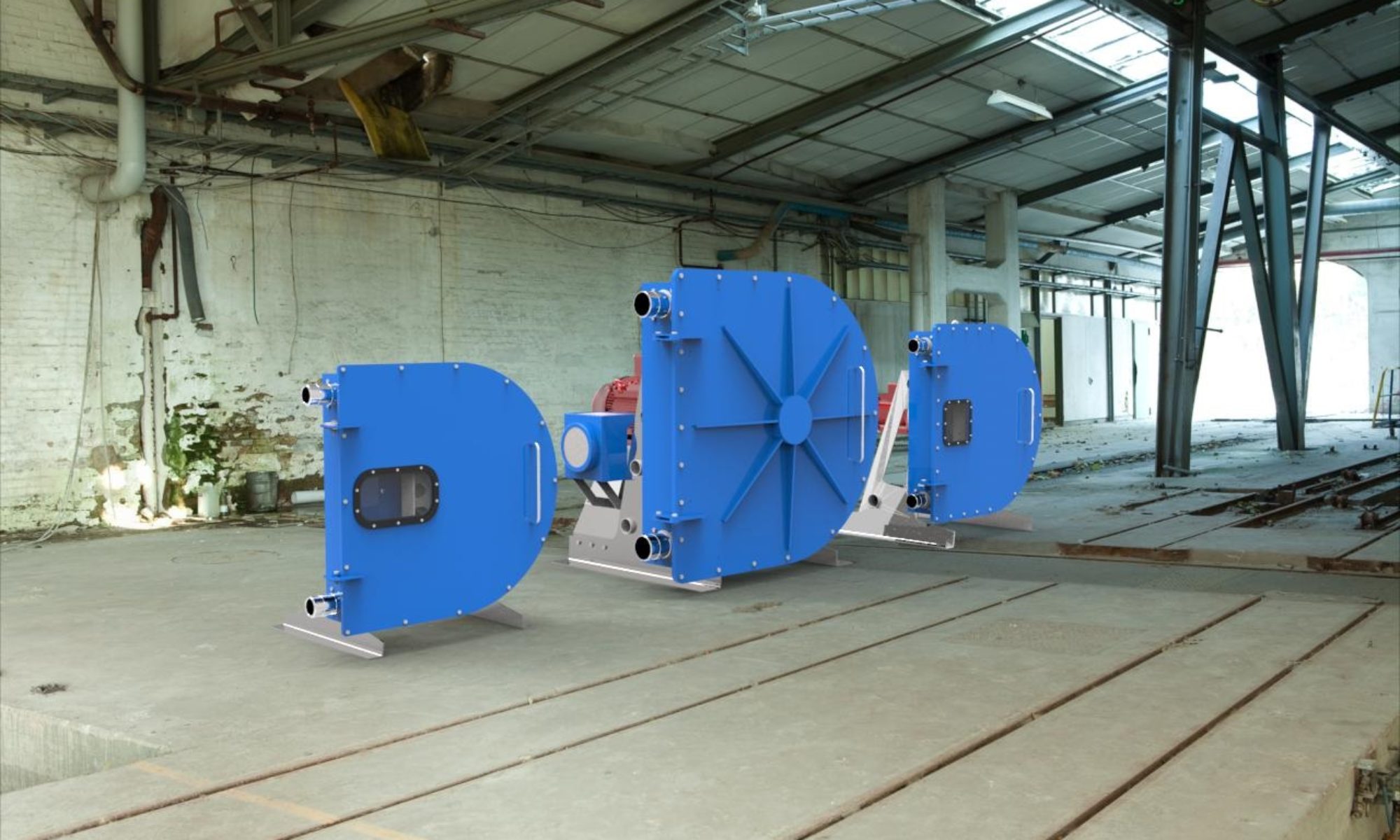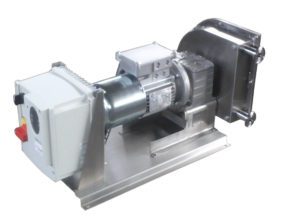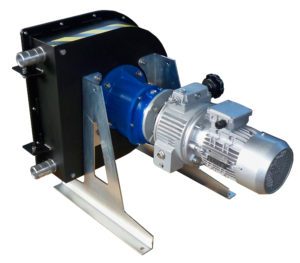Peristaltic pumps for very viscous fluids
 100,000 cps, up to this value can reach viscosity of fluids that our customer, operating in the food sector, must transfer seasonally from reactor to containers prepared for the following Machining. The operation was carried out by flexible impeller pumps with very disappointing results and very high operating costs. The transfer of normal or viscous products, obviously ,did not generate problems, but as the viscosity raise, difficulty, inefficiencies, and high management costs grew fast. The company reached a level that was no longer sustainable. The increasing viscosity of products generated great discontinuity of suction flow to the pumps, often causing destruction of the rubber impellers and mechanical seals of all the pumps available. Viscous and dense fluids = problems.
100,000 cps, up to this value can reach viscosity of fluids that our customer, operating in the food sector, must transfer seasonally from reactor to containers prepared for the following Machining. The operation was carried out by flexible impeller pumps with very disappointing results and very high operating costs. The transfer of normal or viscous products, obviously ,did not generate problems, but as the viscosity raise, difficulty, inefficiencies, and high management costs grew fast. The company reached a level that was no longer sustainable. The increasing viscosity of products generated great discontinuity of suction flow to the pumps, often causing destruction of the rubber impellers and mechanical seals of all the pumps available. Viscous and dense fluids = problems.
This is the fact, without any consideration for the long process pumping times, combined with cleaning, restoring and continuous maintenance time spent for the various pumps involved . The company technical manager finally decide to seek a rational solution to solve the issue, he exposed the problem to several pump producers, proposing them a sample of the most difficult viscous product to verify the transferability. No one proposed a solution, 100000 cps are a limit for almost everyone. We made our own tests with our peristaltic pumps. After that we have realized that we could definitely eliminate the high viscosity transfering problems of this company.
The right solution for very viscous and dense fluids.
Now, a peristaltic HCP 50 pump equipped with special accessories has replaced the previous pumps in the suction and transfer operations. Our peristaltic pump is equipped with additional vacuum system and Inverter panel for the management of the speed variation. The possibility to change the speed allows the adaptation of the pumping capacity to the characteristics of most of the less problematic fluids. With the few high viscosity fluids, increased vacuum system allows to obtain the suction efficiency required, needed to work with high viscous products (up to 100000 cps).
The pump capability of realizing a vacuum up to 95% and the ability to keep it stable even with different speeds allows the HCP 50 peristaltic pump to satisfy the customer’s requirements for high viscosity fluids. Low operating cost and effectiveness in operation have consolidated the trust of our customer to our peristaltic pumps. We can expect the introduction of some other machine in future
More information about the pump: HOSE CARRIER HCP 50
I’m interested but without obligation, keep me informed


 In this company is produced honey in an amount quite significant. The manufacturing process provides several steps. Only one is of our interest step, suction and the transfer of honey in order to obtain a product having the qualities required by demanding market. Some typical characteristics of honey complicate things, and make p
In this company is produced honey in an amount quite significant. The manufacturing process provides several steps. Only one is of our interest step, suction and the transfer of honey in order to obtain a product having the qualities required by demanding market. Some typical characteristics of honey complicate things, and make p If there is a peculiarity that in principle distinguishes the peristaltic pumps from the others in general, it is the characteristic of being “contactless” This means there is no physical contact between the pumped fluid and the pump’s mechanical organs. The treated fluid remains entirely contained in the peristaltic hose. This peculiarity excludes, in fact, that materials that are compatible with the liquid to be treated must necessarily be used to make the pump as inevitably applies to all other types of pumps, often made in stainless steel.
If there is a peculiarity that in principle distinguishes the peristaltic pumps from the others in general, it is the characteristic of being “contactless” This means there is no physical contact between the pumped fluid and the pump’s mechanical organs. The treated fluid remains entirely contained in the peristaltic hose. This peculiarity excludes, in fact, that materials that are compatible with the liquid to be treated must necessarily be used to make the pump as inevitably applies to all other types of pumps, often made in stainless steel.